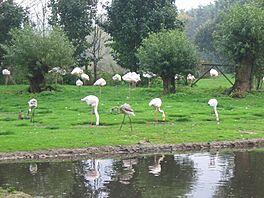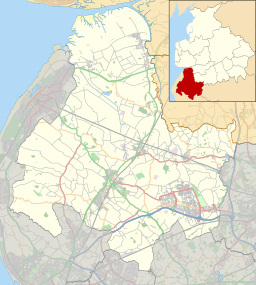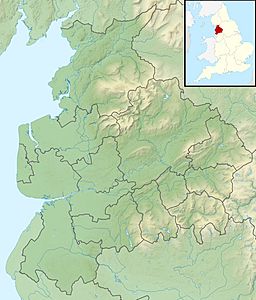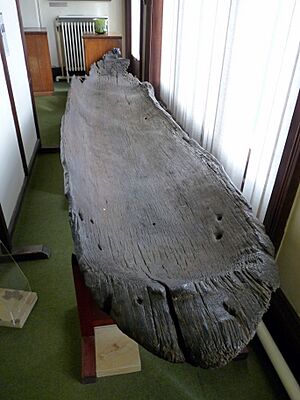Martin Mere facts for kids
Quick facts for kids Martin Mere |
|
|---|---|

Flamingos at Martin Mere Wetland Centre
|
|
| Location | Lancashire |
| Coordinates | 53°37′21″N 2°52′7″W / 53.62250°N 2.86861°W |
| Type | mere |
| Basin countries | United Kingdom |
| Official name: Martin Mere | |
| Designated: | 28 November 1985 |
| Reference #: | 324 |
Martin Mere is a large, shallow lake (called a 'mere') located near Burscough in Lancashire, England. It sits on the flat West Lancashire Coastal Plain. This area was once a huge marsh. Before it was drained, Martin Mere was the biggest freshwater lake in England.
Contents
The Story of Martin Mere
How Martin Mere Was Formed
Martin Mere came into being at the end of the last Ice Age. This was a time when much of the Earth was covered in ice. As the ice melted, water filled a dip in the land. This dip was created by glacial drift, which are rocks and soil left behind by glaciers.
Over many years, the size of Martin Mere changed. It grew bigger and smaller as water levels went up and down. An old map from 1579 by Christopher Saxton shows how huge the lake once was. It stretched from Rufford in the east to Churchtown in the west. Villages like Mere Brow and Holmeswood were to the north. South of the lake were places like Scarisbrick Hall and Martin Hall.
Draining the Great Lake
Originally, the water from Martin Mere flowed out in two directions. One part, called the Wyke, drained into a pool near what is now Blowick. The other part flowed into the River Douglas at Rufford.
People started trying to drain the mere in 1692. Thomas Fleetwood dug a channel to help the water flow away. More attempts were made in the 1780s. But the mere was only truly drained in the mid-1800s. This happened when steam pumps were invented and used.
After the land was drained, it became very rich and fertile. Farmers used this land to grow crops and create market gardens. Later, between 1974 and 1982, sand was dug from the old lake bed. This sand was used to make glass. The area where the sand was dug is now Mere Sands Wood, a nature reserve.
An ancient canoe was found during excavations at Martin Mere. This canoe is now on display at the Atkinson Art Gallery and Library for people to see.
Martin Mere Today
Today, a part of the original Martin Mere is a special place for wildlife. It is called the Martin Mere Wetland Centre. The Wildfowl and Wetlands Trust manages this wetland nature reserve. It is a safe home for many different kinds of birds and other animals.




